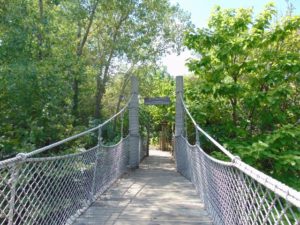
Overall Rating![]()
Sedgwick County Zoo is located in Wichita, KS. The zoo opened in 1971 and is approx. 247 acres. The zoo is home to approx. 500 different species with approx. 2,500 animals. The Zoo is an accredited member of the Association of Zoos and Aquariums and participates in the AZA program called the Species Survival Plan. This Kansas zoo has become very important in the breeding of rare and endangered species. The Sedgwick County Zoo also ranks as the number one outdoor tourist attraction in the state.
Sedgwick Country Zoo Website: www.scz.org
Hours:
Summer (March-October) 8:30am-5:00pm Daily
Winter (November-February) 10:00am-5:00pm Daily
Ticket Pricing (Approx.)
Adults (12-64)-$15.95
Seniors (65+)-$11.95
Kids (3-11)-$11.95
Kids 2 & under-Free
Parking: Free
Pet Daycare:
The Zoo does have a Pet Daycare (Free) for families traveling with their pets. There is limited space, so calling ahead would be advisable.
Service Animals are Welcome
With any extra service provided I would always call ahead for any information.
Restaurants:
There are 4 seasonal restaurants/concessions inside the zoo for patrons.
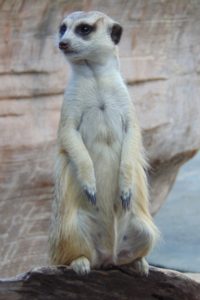
Animal Habitats![]()
Education![]()
Cultural Immersion![]()
Navigation![]()
Food Variety![]()
Click here to find more information on the category ratings.
Our Zoo Experience
Sedgwick County Zoo is in Wichita Kansas. We arrived at the zoo at 9 am when it opened. Since the zoo is approx. 247 acres it is a full day zoo. The zoo is very unique in that the exhibits are sectioned by Continent rather than like species.
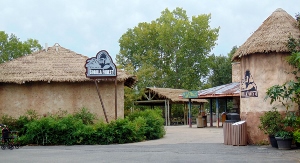
The Continents represented are North & South American, Africa, Asia, & Australia. As we go I will let you know what Continent we will be visiting. They have a beautiful entry to the zoo.
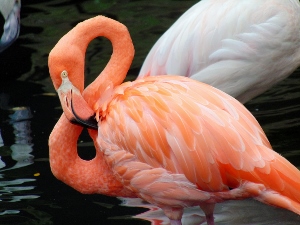
There is a small Koi pond with a bridge you walk across to get to the admission booths. You can stop and feed the Koi just be aware of the sassy Geese that take advantage of the people feeding the Koi.
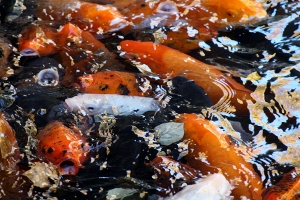
Once inside the zoo we stay right and follow the trail leading to the Children’s Farms and the Penguins. The first exhibit we came to was the kind of hidden Flamingo habitat. It is located to the right back in the trees.
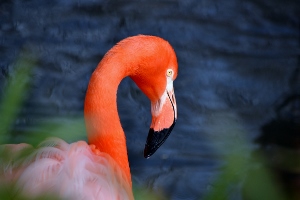
The Children’s Farms are the first right, you walk through a covered bridge over another area where you can feed Koi. Steve and I didn’t make it to the Children’s Farms on the first couple of trips to the zoo. However, we did walk through the Children’s Farms on our last trip and we will be going back through them on every future visit!
They are wonderful and full of unique species and great education. The zoo has three different types of farms. They have an African, American, & Asian Farm. The first farm you come to is the Asian Farm.
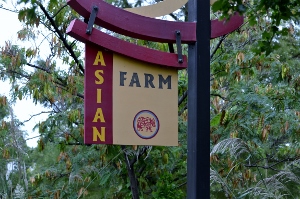

In the Asian Farm they have species like the Karakul Sheep, Yak, and Gyr Zebu.
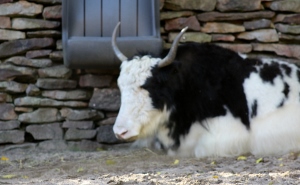
As you walk across the bridge you will see the Sheep, Yak, and Zebu first.
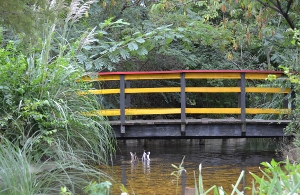
They also have Silky Bantam Chickens, Indian Runner Ducks, and Domestic Water Buffalo. It was super cool to see the Water Buffalo. This was our first experience with them!
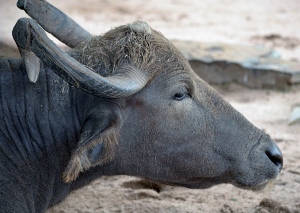
Running around in the same area as the Water Buffalo and Vietnamese Pot-bellied Pig are Sebastopol Geese. They have the most unusual feathers. It is almost as if they are wearing the inside of a down pillow. Their feathers are not slicked back like other Geese species.
The next farm you can visit is the American Farm.
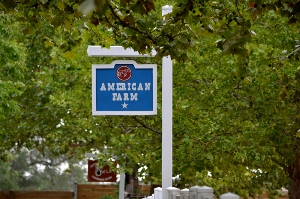
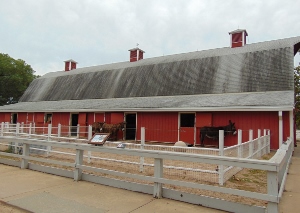
They have the most adorable Goats you can pet and love on. They are Arapawa Island Goats and Nigerian Dwarf Goats. Steve got the cutest Goat selfie.
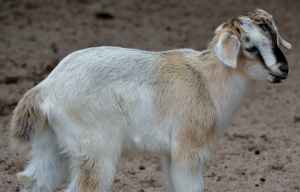
After you spend time with the Goats you can see an Incubation chamber and learn about the different Poultry from the American Heritage Farms across North America.
They have indoor and outdoor viewing for the Pigs, Cattle, and Horse breeds at the American Farm. The first species is Gloucestershire Old Spot Pig. The day we visited they had just had a litter of piglets.
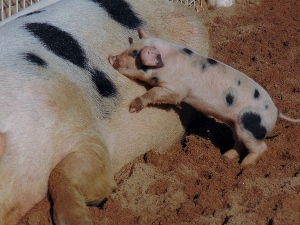
The next species you encounter are a wide variety of Cattle, mostly Milking Cows. They are Highland Cows, Texas Longhorns, Milking Devon Cow, Pineywoods Cow, and Ancient White Park Cow.
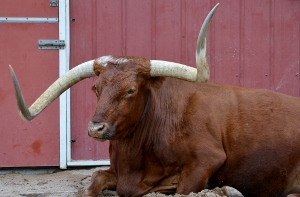
Some of these breed I didn’t even know existed and this is coming from a girl who was raised showing livestock in 4-H and FFA.
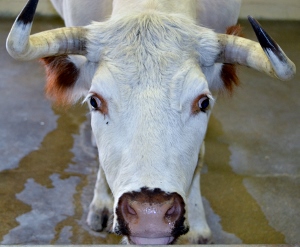
The Equine breeds to me were the coolest. They have an American Cream Draft Horse named Shasta and a Mammoth Mule named Banshee!
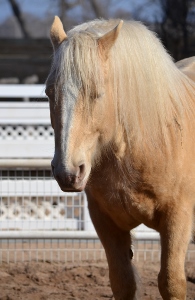
Banshee is my favorite because she has the most darling face. I also grew up with Horses. You could say I was a well-rounded kid.
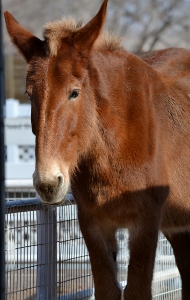
The strangest animals in the American Farm are the Poitou Donkeys. They have Dreadlocks!! They are Wooly Donkeys. They have this long hair all over their bodies. They are named after a region in France. They are an import from France. The Poitou Donkey was developed along with the Mulassier Horse to produce high quality Mules.
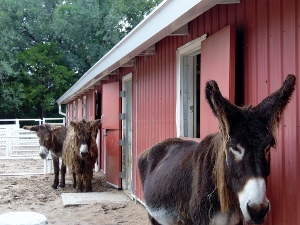
The last animals you will see in the American Farm is a breed of Sheep. The Navajo-Churro Sheep are decedents from the Churra Sheep of Spain and Portugal.
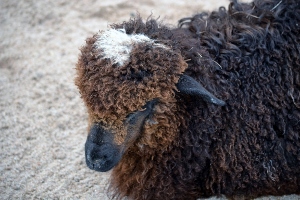
The last farm you visit in the Children’s Farms is the African Farm. They have all kinds of cool species.
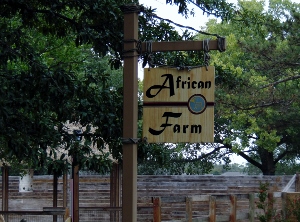
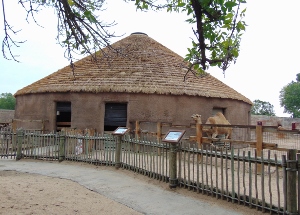
The coolest species for me is the Watusi or Ankole Cattle. They have massive horns.
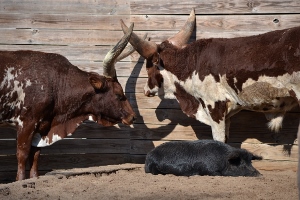
They also have Miniature Donkeys, Guinea Hogs, and African Geese running around with the Watusi.
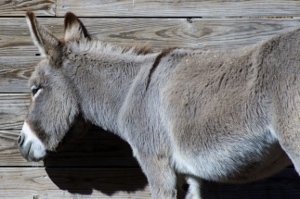
When you walk into the African Farm you have to walk through a double set of gates. This is because they have Tunis Sheep free roaming like the Goats in the American Farm. You can pet the Sheep if they feel like interacting with you.
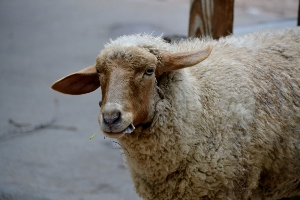
There is a Dromedary Camel on the left side of the African Huts. He kind of gives you the stink eye every once in a while, but he’s pretty cool. I think he has to hear the phrase “Hump Day’ too often and that is the cause of the stink eye.
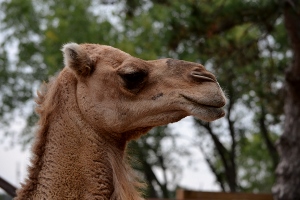
Let me say that the Cultural Immersion for all the Farms in the Children’s area is awesome. You are transported to each country in each of the farms you visit.

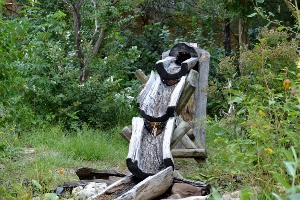
After you make your way back to the main trail you came in on and back across the Koi Bridge you will take a right and be back on your adventure.
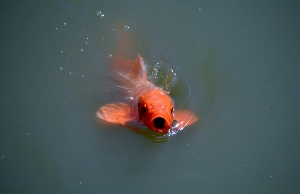
On down the path the second right you come to is the Cessna Penguin Cove it is across the trail from the Plaza Beastro.
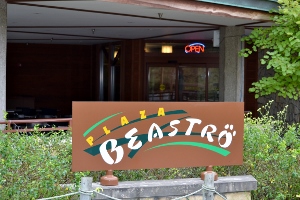
Here the zoo has Humbolt Penguins as opposed to the more common African Black-footed Penguins. Also in the Penguin habitat are Inca Terns and Gray Gulls. Humbolt Penguins are found in Chile and Peru.
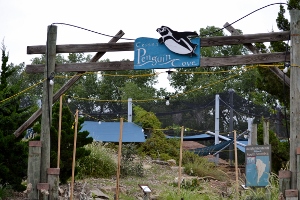
They live along rocky coastlines. One thing you will notice is Penguins don’t smell very good, in fact, they stink. I’m pretty sure if you ate nothing but fish all day every day and have special oils on your feathers, you’d stink too.
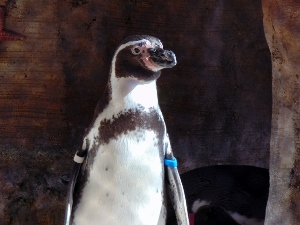
There are seventeen species of Penguin. As you exit the Penguin exhibit there is a Penguins of the World sign, showing all seventeen species from largest to smallest.
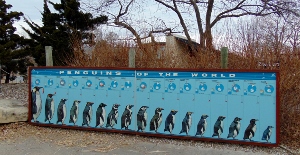
The largest Penguin species is the Emperor Penguin and the smallest Penguin species is called Little Penguin. Hehe.
Next to the Penguin exhibit is the zoos Herpetarium (Reptiles & Amphibians).
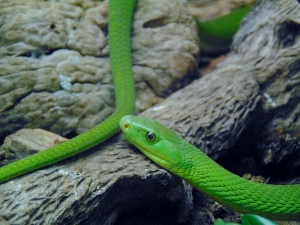
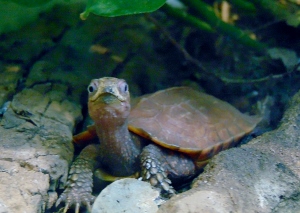
The education the zoo has with each of their exhibits is excellent.
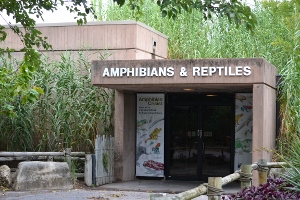
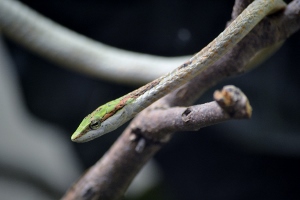
In the Herpetarium, the first species is an Alligator Snapping Turtle.
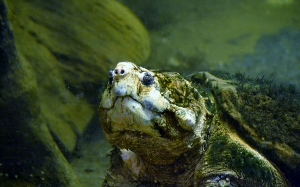
The Alligator Snapping Turtle was resting at the bottom of the pond by the viewing window.
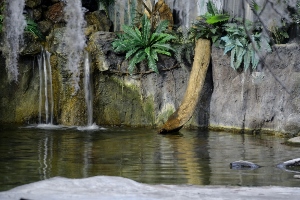
The Sedgwick County Zoo was the first time I saw a King Cobra, and they have two. They have a male and a female, in different habitats, of course. Did you know a King Cobra can see moving objects from 100 yards away, which is the length of a football field?
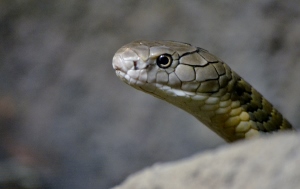
Another cool and fun fact is the King Cobra female will fiercely guard her clutch of twenty eggs from predators. She will do this without leaving or eating for two to three months, until the eggs hatch. As soon as the eggs start to hatch however, the female will leave. You see King Cobras are snake eaters and she hasn’t eaten in two to three months. She doesn’t trust herself not to eat her babies. King Cobras are the only snake species to build a nest for and protect their clutch.
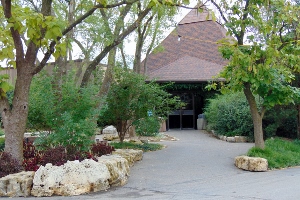
Between the Herpetarium and the Tropics Building is a really neat and informational exhibit on Solar Panels and Solar Power. There are giant sunflowers out in front, you can’t miss it. The zoo uses Solar Panels to operate some of the Herpetarium.

After we thoroughly enjoyed the Herpetarium (Steve humors me I think) we strolled over to the Tropics Building.
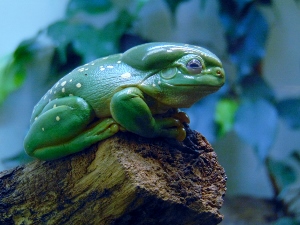
The entry part of the building showcases everything we know about the Rainforest. In the middle of the room is an area that simulates the weather in a Rainforest.
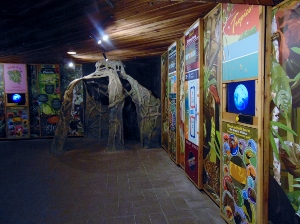
There is a thunderstorm that happens with actual water simulating rain showering down on a variety of tropical plants. Around the simulated Rainforest exhibit is excellent education. The signage tells you everything we as humans know about the Rainforest ecosystem and why it is so important for the survival of our planet.

Along the back wall of the Rainforest room are habitats for the insects and spiders that call Rainforests home. One of the spiders they have is a species called a Goliath Bird-eating Spider.
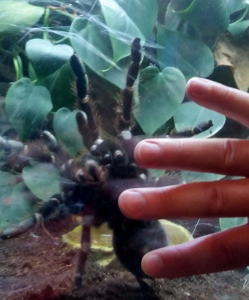
Let me tell you it is bigger than your hand. When we were finished soaking up all the knowledge we could we entered the Rainforest part to the Tropics Building.
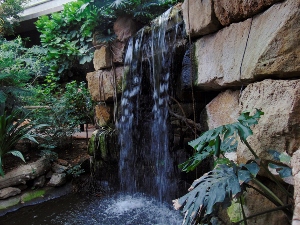
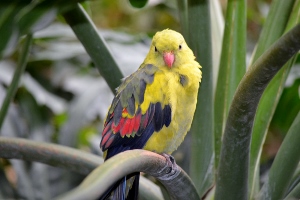
Basically you walk through the door and boom you are in the rainforest.
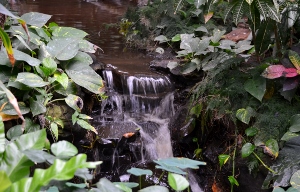
There is path to follow through the rainforest.
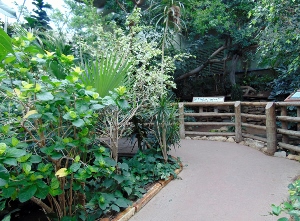
Inside the rainforest you will encounter several species of Birds, Reptiles, Fish, and Mammals.

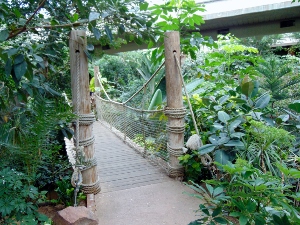
A few of these species include Guam Kingfisher, Giant Fruit Bats, Ducks, Broad Snouted Caiman, and Vampire Bats.

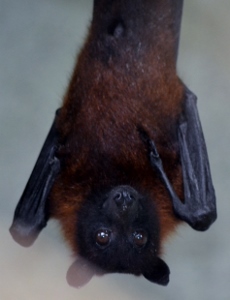
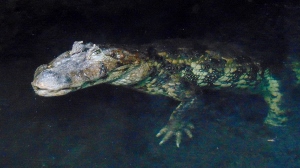
When we exited the Tropics Building the next exhibit we traveled to was North America.
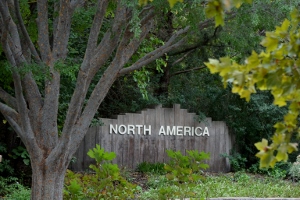
In N. America the first species we encountered was Grizzly Bear. As we were watching the Grizzly come down some rocky steps we see something dropped from above and land in the Grizzly pool.

We were under this underpass (kind of) next to the Grizzly’s pool where the viewing window is located. The Grizzly’s Keepers has just dropped a frozen treat in the pool for him. It had frozen fish and fruit in it. The Grizzly Bear hopped in his pool and tried to get his frozen treat as we were standing there.
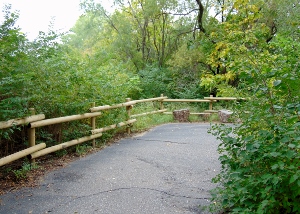
We walked up and along the trail to the next habitat of the North American Black Bear. The Black Bear has a great habitat with its own pool, shady log den, and a hammock.
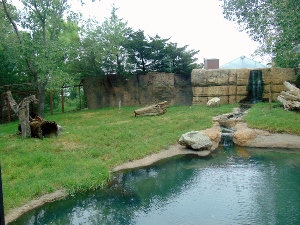
Across from the Black Bear lives the North American River Otters. The Otters have a slide they can use to enter their pool. One of the Otters was trying to take a nap when we walked up.
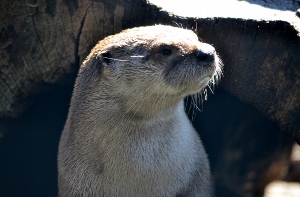
I say trying because the little cutie was getting mad at some birds that were being particularly loud right above the Otter habitat. The Otter kept raising her head up and looking up at the birds with this disgusted look on her face. It was neat to see that we humans aren’t the only ones who get annoyed by noise when trying to take a nap.
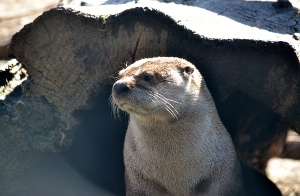
Next to the Black Bear habitat, the Black Bear was laying by his pool and closely watching, is the White-tail Deer and Wild Turkey habitat.
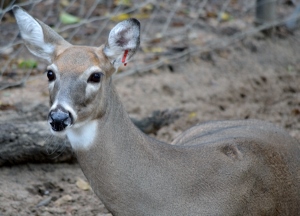

The next habitats can all be seen from above; walking along a boardwalk that slowly ascends.
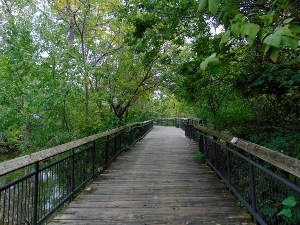

These species include American Elk, Bald Eagle, Mexican Grey Wolves, Pronghorn, and American Bison. Do you know what the genus and species name for Bison is? It is Bison, Bison.
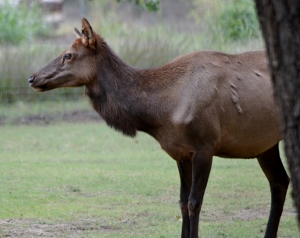
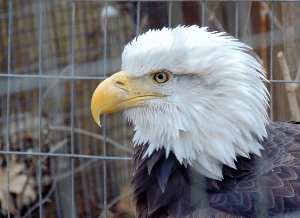

The boardwalk will take you over a river that bisects part of the zoo. In the summer months you are able to take a boat ride which takes you through North American and Africa.
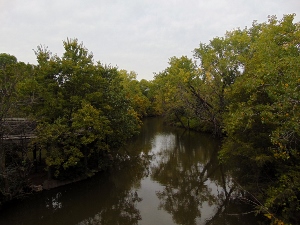
It is the only way to get a close look at Lemur Island without having to use a camera or binoculars. More on that later. Once you leave the boardwalk you will turn right and walk down a small hill to encounter Mountain Lions.
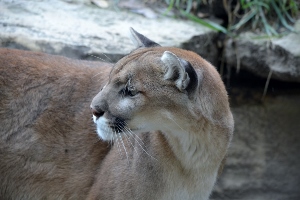
When we left the Mountain Lions we only had to back track a short bit back to the boardwalk. Keep going straight through past the boardwalk.
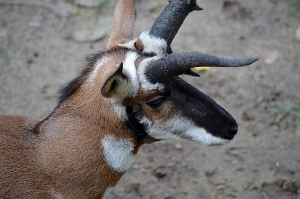
Once you come to a T you can turn left to the Prairie Dog Habitat or right to the Asian Tiger Trek. The Prairie Dogs are little chunky monkeys.
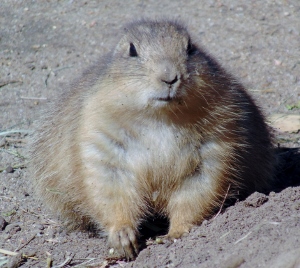
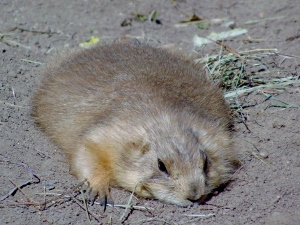
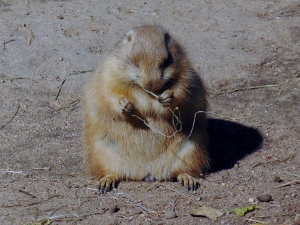
Right before you get to the Tiger Trek in Asia there is an Asian Garden and Aviary.
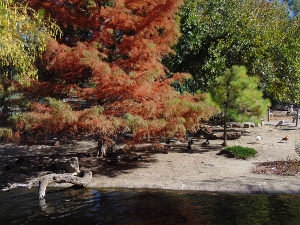
There are multiple species of Ducks and Birds just walking around show I would definitely watch where I step.
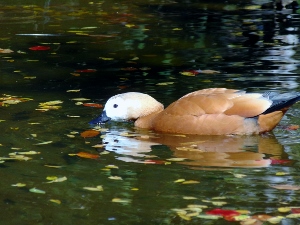
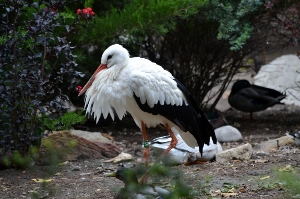
At the end of the path that takes you through the Asian Garden and Aviary you can circle back around toward the Tiger Trek.
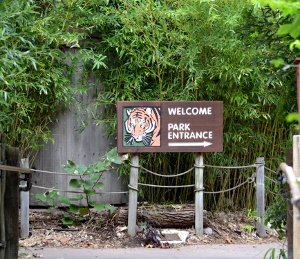
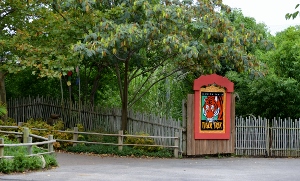
After you leave the Aviary but before you enter the Tiger Trek you will encounter an Amur Leopard.
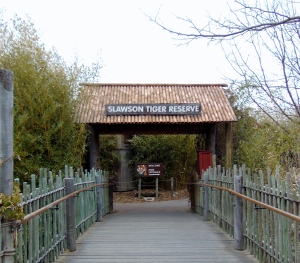
When entering in to Asia there are little creeks to cross and if you look down you will see a poacher’s boat that has been confiscated by the Game Rangers.
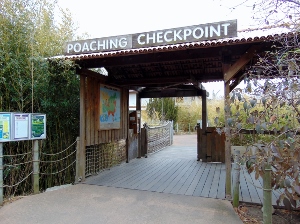
There is also a map showing you where all the different Tiger species home ranges are in Asia. There are Tiger tracks and Tiger scat to look out for on the path to the Tiger’s habitat.
In front of the building is the Red Panda habitat. If you don’t see the little cutie in its house look up in the trees. There is a ledge it likes to lay on.
We entered the building and on both sides there is floor to ceiling glass windows for prime Tiger viewing.
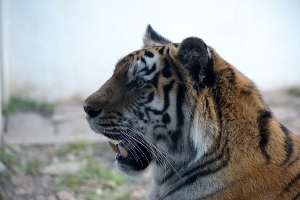
Each side is a different habitat for a Tiger. Inside their habitats is great hiding spots, pools, and areas to lay or sit right next to the windows.
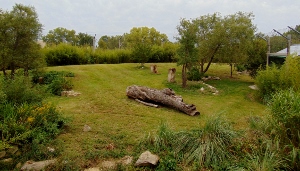
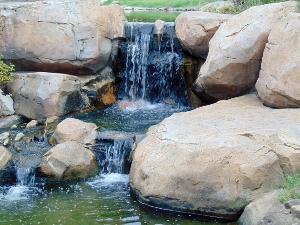
The trek loops around and you will exit the same place you entered. Before you exit you will see some Asian Brow-antlered Deer and you will walk through and Asian Open Air Market.
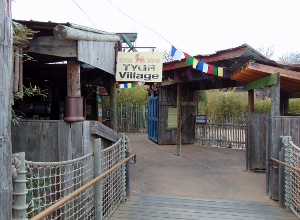
When we exited Asia’s Tiger Trek we turned left and walked along a path that leads to Africa. We entered the Nganda Village.

Here the zoo has a children’s playground, picnic tables (covered), a concession stand, restrooms, and for hot days a mister to play in.
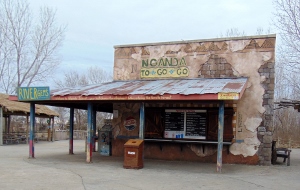
Head right toward the Downing Gorilla Forest to see Western Lowland Gorillas and Okapi.
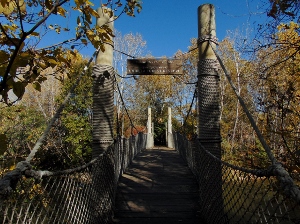
Before you cross the bridge onto the forested pathway make sure you stop at the Colobus Monkey habitat.
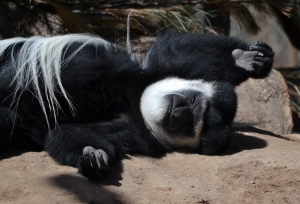
The Gorilla habitat is very large containing a waterfall and pool along with huge trees for them to climb and hide behind.
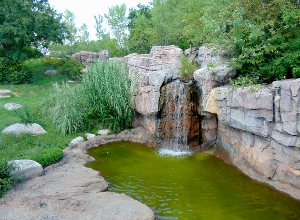
When you enter the building there is an indoor area for the Gorillas to the right.
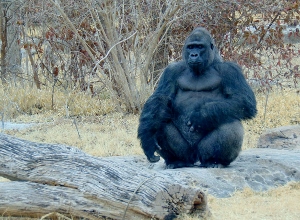
There are several floor to ceiling viewing windows so you can see all the Gorillas when they are in their indoor area.
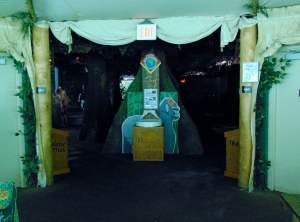
To the left are multiple education signs along the with TVs showing keepers talk about Gorilla Conservation.
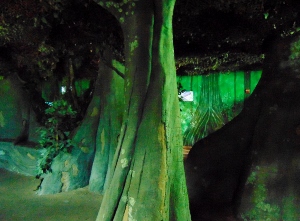
Walk further into the building and into a huge round tent.
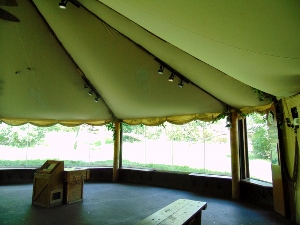
Here is where the viewing windows are for the rest of the outside habitat. There are also several hands-on educational stations.
On our visit there was a huge Silverback Gorilla sitting with his back against the window. On the inside there are ledges around the tent next to the windows for people to sit and watch the Gorillas. I told Steve to go sit with his back against the Silverback’s back.
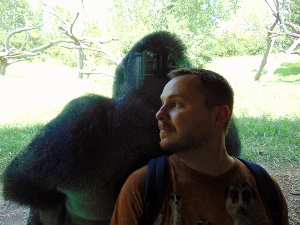
The size difference was incredible. I mean I knew they were big, but to see it in person, WOW!
This trail loops, when you exit the Gorilla building the trail leads you to the Okapi habitat. Okapi thrive in the dense forests in Africa. They are also related to the Giraffe.
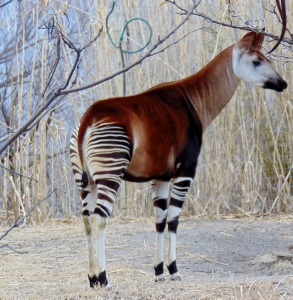
The Okapi share their habitat with the African Crowned Crane.
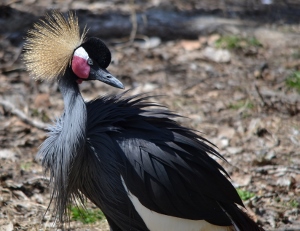
Head back to the Nganda Village when you get past the concession stand look out over the water and in the distance you can see African Elephants. First look at the island to the right of the Elephants, this is Lemur Island.
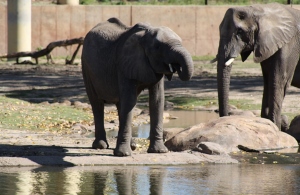
On Lemur Island live Ringtail Lemurs for most of the year. When winter rolls around they do take the Lemurs to the wintering house behind the scenes.
As you walk along the path you see a herd of African Elephants.
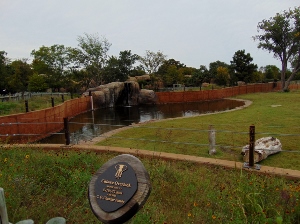
These are the Elephants of the Zambezi River Valley in Africa. 17 Elephants came from Swaziland Parks. The Elephant population in this park was getting too big for the resources the park had to offer. The Swaziland Conservation Managers believed small herds of Elephants can live in the park without destroying the ecosystem.
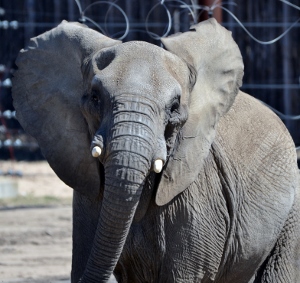
Moving the Elephants to other protected parks in African was not feasible. The protected parks already have stable populations of Elephants. These parks cannot and will not accept more Elephants. If they were re-located beyond the protected parks it would have put them in extreme danger. Thus the tough decision was made to send some Elephants to zoos.
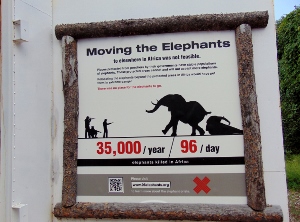
On March 10, 2016 seventeen Elephants were carefully placed on a specially made Boeing 747-400 along with caretakers and veterinarians. They then began their trip across the Atlantic Ocean to Kansas. The plane first landed in Dallas, TX where five of the Elephants were unloaded and taken to the Dallas Zoo. Those five are now part of Dallas Zoos Wilds of Africa, Giants of the Savanna.
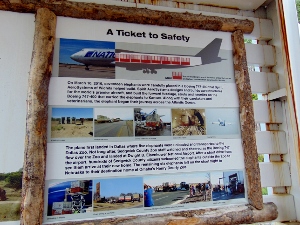
The plane of Elephants then landed in Kansas. Six Elephants now call the Zambezi River Valley at the Sedgwick County Zoo home. The remaining six headed to the Henry Doorly Zoo in Omaha, NE. At the Sedgwick County Zoo in Wichita Kansas you can learn the full amazing story about the journey the seventeen Elephants made in 2016.
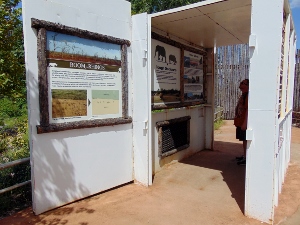
You can also see the crates the Elephants traveled in and learn about the custom Boeing 747-400 plane.
After leaving the Elephant Boma in the Zambezi River Valley follow the path to East Africa.
The first habitat you will come to is the Meerkats.
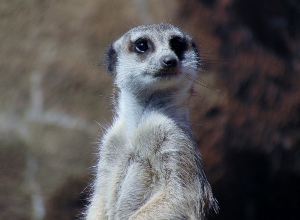
Steve really likes the Meerkat habitat, he says it is one the best. They have plenty of tunnels to hide in and several high points to sentry from.
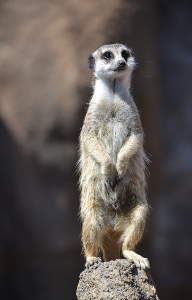
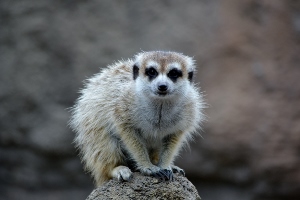
As you follow the path around the next habitat you come to is the Red River Hogs. The Red River Hogs habitat has a sandy beach for them to root around in. They also have a small river they can cool off in on those hot summer day. It is a great habitat.
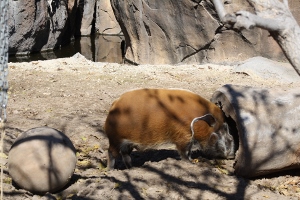
The final habitat in East Africa and the Pride of the Plains is the African Lions. Ha-ha, see what I did there?
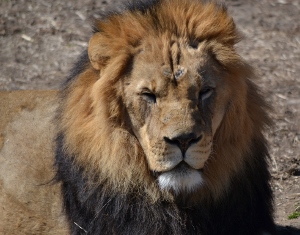
There are huge glass viewing window on two sides of the habitat. There is almost a 360 degree viewing of the habitat.
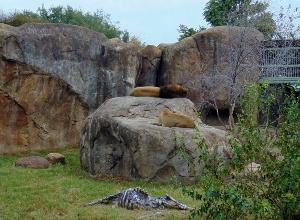
The Lions have a huge rock they love to lounge on during the warmer parts of the day. They are able to get good sun there.
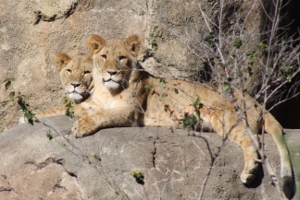
Across from the Pride of the Plains is the Warthog and Impala habitat. They are in a co-habitation habitat.
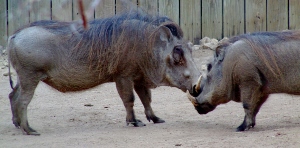
Next to them, separated by a river, is the Grevy’s Zebra.
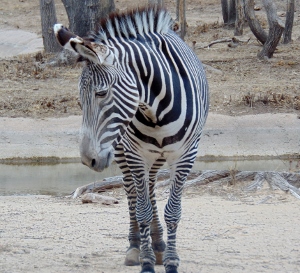
Beyond the Zebra the next species you will encounter is the Common River Hippo. The zoo currently has two Hippos. You can walk down a small hill and under the walkway above is an underwater viewing area. The Hippos spend approx. 80% of their day in the water, weather permitting.
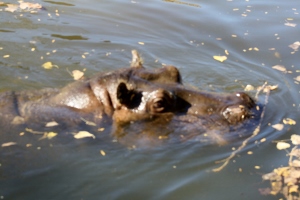
Next to the Hippo habitat is the Southern Black Rhino. The zoo currently has two Black Rhino. They have a really nice habitat and can see their Hippo and Giraffe neighbors.
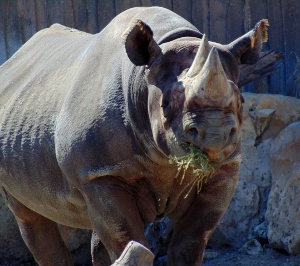
The Reticulated Giraffe and Caracal are the last habitats you will visit as you leave Africa. Their habitats are across from one another.

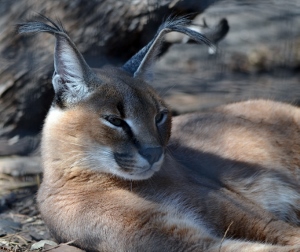
The exhibits we traveled to next are Australia then South America.
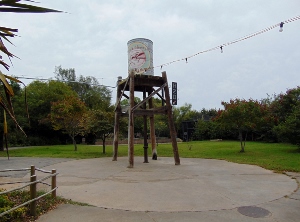
Australia and South America are under an aviary.

The reason for this is because there are free flying birds and free roaming Wallaby and Pudu.
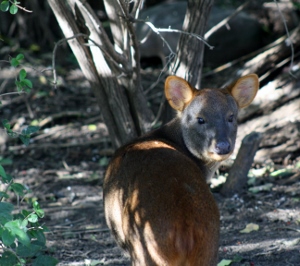
The first habitat you encounter in Australia is the Cassowary. The Cassowary are large birds native to the tropical forests of New Guinea and North Eastern Australia. They can stand six foot tall and can weigh up to 160 pounds.
In the Australian habitat as previously stated there are Wallabies that roam free. You can see these little guys normally laying around their houses placed in the taller grassy areas.
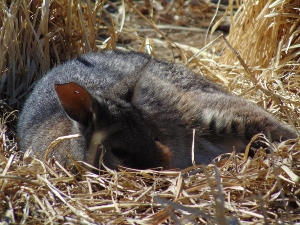
There are also Wallaroos which are the medium size between Kangaroos and Wallabies. They are not free roaming.
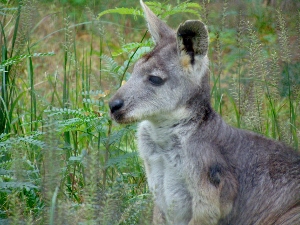
Various Bird and Duck species can be seen wandering around the trees and watering holes.
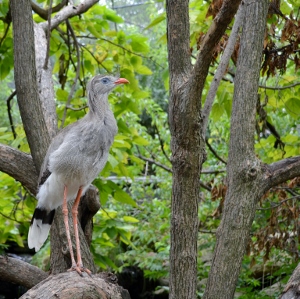
To get to South America you exit a set of doors in Australia, walk through a kind of foyer, and enter a set of doors to South America. The first habitat you see in South America is the Guanaco (cousin of the Llama).
Across from them is the Argentine Tegu. The Tegu is very active and will go far outside his range in search of food. The Tegu population is considered stable as of 2016. If you are having trouble seeing this species of Lizard just look up. They like to spend some of their time in the trees.
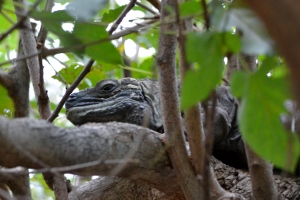
A very distinctive looking Raptor called a King Vulture is found in South America. It is distinctive because it is the most colorful of the Vulture species. This tropical scavenger has a wingspan of 6.5 feet. It is one of the largest of the New World Vultures.
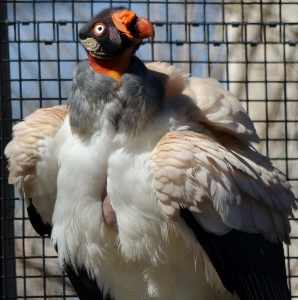
You can smell the next species before you even see it. Nicknamed the Skunk Wolf, the Maned Wolf is the largest Canid of South America.
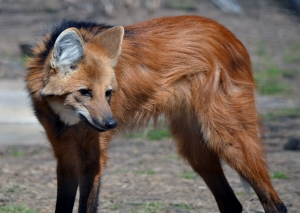
Adorable Pudu, a small species of deer, are free to roam the South American exhibit.
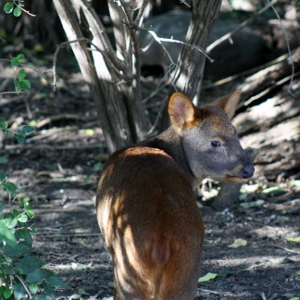
The habitat after the Maned Wolf is that of the Collared Peccary, also a stinky little cutie. They are often called the “Musk Hog” or Javelinas. Though they are kind of related to pigs, and frequently referred to as one, the Peccary (all species) is no longer classified in the pig family Suidae.
Next you will come to meet the largest Rodent in the world the Capybara. Some individual Capybara can weigh up to 150 pounds.
The last habitat under the aviary belongs to the cute little Coati. These little guys are related to the Raccoon family.
When exiting South America, as you go through the double set of doors make sure you only open one set at a time. The reason for this is if something makes it past the first set of doors there is another there to stop them. In all our zoo travels never once has this been an issue. However, it is a good thing to practice. After you exit the second set of double doors to your right is the last South American habitat.
In this habitat you will see the South American Giant Anteater. If you watch closely when the Anteater is walking you will notice it walks on its knuckles. This is because they have extremely long claws on their hand to dig in termite mounds and trees that are home to Ants.
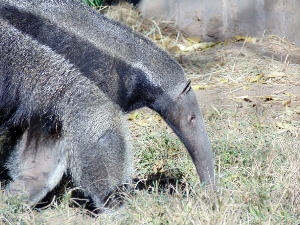
The last or first exhibit we came to (depending on which way you start your zoo journey) is the Koch Orangutan and Chimpanzee exhibit. Here the zoo has indoor and outdoor viewing.
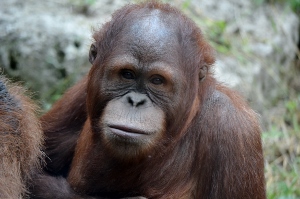
Most of the outdoor viewing is covered, you sort of feel as if you were in the jungle. You know except for all the building and sidewalks. Both habitats are excellent for the species they are home to.
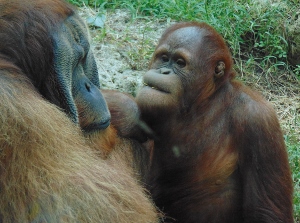
They have ample space, great climbing apparatus, great viewing windows (so the Primates can watch YOU!), and lots of enrichment. Both Primates also have great places to hide if they are feeling shy.
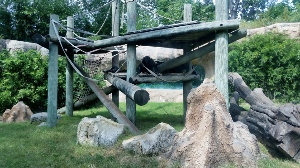
The last time we were there one of the females had just given birth to an ADORABLE baby girl. I mean she was weeks old when we got to see her. She was already up swinging on the ropes in the indoor play area.
Overall the Sedgwick County Zoo is in my top five zoos to visit. The zoo is so immersive in the right places and has top notch education. We can’t wait to go back!!